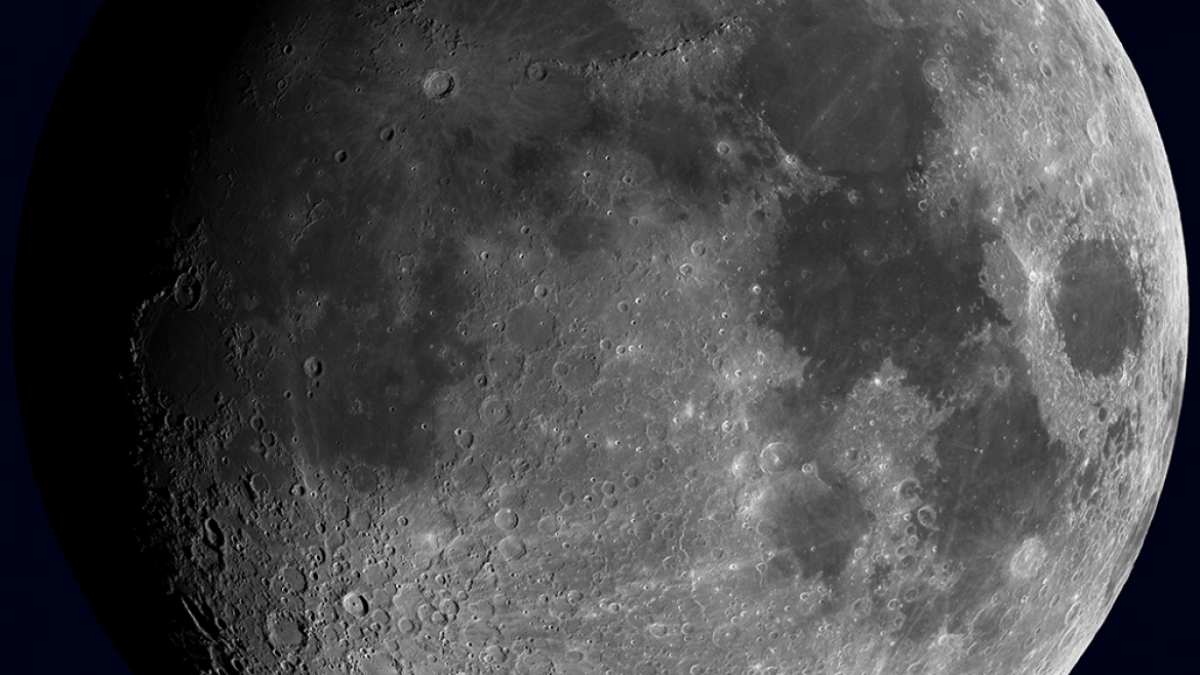NASA's ShadowCam now lets you explore the moon’s darkest places

The moon photographed by the Lunar Reconnaissance Orbiter Camera team at ASU. Photo by NASA/GSFC/Arizona State University.
There are places on Earth’s moon where sunlight never reaches. Now, you can peer inside them — literally see inside these shadows.
These are regions that have never been clearly seen by telescopes or spacecraft. But thanks to NASA’s ShadowCam, which is operated by ASU’s Lunar Reconnaissance Orbiter Camera (LROC) team, we can all start probing these shadows from our laptops and home computers.
NASA's ShadowCam rides aboard the Korea Pathfinder Lunar Orbiter (KPLO). The ASU-based team manages the images and datasets. It is led by Principal Investigator Mark Robinson, a professor in Arizona State University’s School of Earth and Space Exploration. KPLO was built by Korea Aerospace Research Institute (KARI) and launched aboard a SpaceX rocket in August of 2022.
ShadowCam is designed to look at the areas that don't get any direct light: permanently shadowed regions (PSRs). Scientists believe these places might have the best chance of holding water ice and other elements that could be useful for astronauts and future landers on the moon.
NASA’s upcoming Artemis 3 mission is slated to bring humans back to the moon’s surface. The plan is to land them near the moon’s south pole, which has an abundance of PSRs. ShadowCam is already at work peeking into these areas.
Public access to the ShadowCam images is happening alongside the team’s release of the first three months of the instrument’s work. These images include views of the Earth and moon ShadowCam captured as it arrived and established orbit.
ASU’s team will release more images as the mission continues. This is part of their work managing the ShadowCam Planetary Data System (PDS) dataset. The PDS serves as an archive for digital data products returned from NASA's planetary missions and other flight and ground-based data acquisitions, including laboratory experiments.
The new map interface can be accessed at data.ser.asu.edu. Nick Estes, operations manager for ShadowCam, explains how to begin your search in this short video:
"ShadowCam has a much more sensitive detector, so when we fly over these permanently shadowed craters, we can take very detailed images using light reflected off of nearby surfaces into the shadow. And by doing that, we will understand what is in these craters," Robinson said.
ShadowCam’s design is based on the Lunar Reconnaissance Orbiter Camera (LROC) Narrow Angle Camera (NAC), also managed by the ASU-based team in Tempe. But ShadowCam is much more sensitive, in order to target the dark regions. The mission’s main goals are to map the interiors of PSRs and morphology, the albedo patterns, and to record temporal changes.
The mission will also search for landforms indicative of permafrost-like processes, investigate the origin of anomalous radar signatures, and provide hazard and trafficability terrain information for future missions.
Visit the ShadowCam website for more details.
More Science and technology

ASU postdoctoral researcher leads initiative to support graduate student mental health
Olivia Davis had firsthand experience with anxiety and OCD before she entered grad school. Then, during the pandemic and as a result of the growing pressures of the graduate school environment, she…

ASU graduate student researching interplay between family dynamics, ADHD
The symptoms of attention deficit hyperactivity disorder (ADHD) — which include daydreaming, making careless mistakes or taking risks, having a hard time resisting temptation, difficulty getting…

Will this antibiotic work? ASU scientists develop rapid bacterial tests
Bacteria multiply at an astonishing rate, sometimes doubling in number in under four minutes. Imagine a doctor faced with a patient showing severe signs of infection. As they sift through test…
